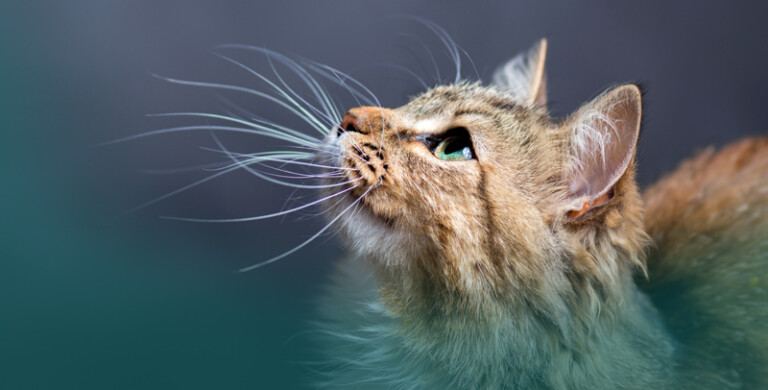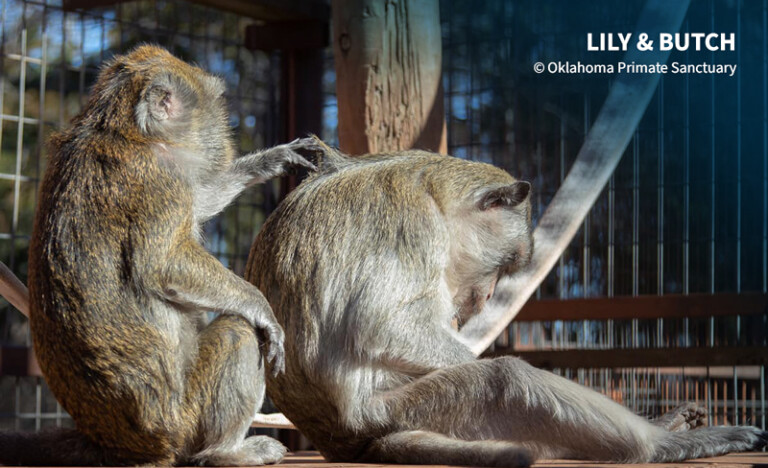AAVS News
October 14, 2022
NO reason to dissect, Senate passes FDA bill, pet cloning failings, and monkey meet-ups
Study Finds Alternatives Better Than Animal Dissection
A study published in The American Biology Teacher reviewed the educational value of dissection alternatives as learning tools. It concluded that students using non-animal methods can learn just as well—if not better, than those who participate in traditional animal dissection. The article, “Animal Dissection vs. Non-Animal Teaching Methods: A Systematic Review of Pedagogical Value,” examines studies published from 2005 – 2020 that evaluated the effectiveness of alternatives versus animal dissection. It was discovered that, in 95% of the studies reviewed, students in high school, college, and medical school “performed at least as well—and in most of those studies better—when they used [alternatives] compared to animal dissection.”
AAVS’s Animalearn Director, Nicole Green, who has over 20 years of humane science education experience, contributed, along with other co-authors from animal protection organizations, and study lead, Elisabeth Ormandy, Ph.D. “These new findings will help science educators understand that animal specimens are no longer necessary as anatomy teaching tools, and ideally, encourage teachers to incorporate non-animal methods into their classrooms to replace animal dissection entirely," said Nicole.
The alternatives referenced in the reviewed studies include clay and 3D plastic models, dissection computer software, and virtual reality simulations. Many of these dissection alternatives, and more, are available through Animalearn’s free loan program, The Science Bank.
Other News
The Senate has unanimously passed the FDA Modernization Act 2.0, a bill that would advance the use of alternatives to test drugs. Current law specifies animal testing in requirements to establish drug safety and efficacy. While this bill does not require the use of non-animal tests, it broadens the definition of the types of tests that are acceptable, allowing drug companies to submit non-animal testing data to the FDA in the approval process. It’s now being considered in the House.
READ MORE »
A study published on the Nature website discusses the difficulties in cloning animals, stating specifically that dog cloning has an efficiency rate of just over two percent. The authors go into detail about their methods used in cloning 1,000 dogs, but omit important details, like the number of surrogate dogs who suffered repeated ultrasounds, blood draws, and invasive surgeries. This lack of transparency only further perpetuates animal suffering in an industry with little meaningful regulation.
READ MORE »
Sanctuary Moment
Oklahoma Primate Sanctuary
Lily and Butch enjoy a grooming session
The Oklahoma Primate Sanctuary (OPS) is one of our favorite sanctuaries caring for monkeys who have been released from labs, and they do a great job of not just providing animals with food, shelter, and medical care, but also by helping them fulfill their social needs. Like humans (who are also primates!), most monkeys need positive social interactions to be truly happy. But sadly, not all primates who arrive at the sanctuary, especially those who were kept as pets, know how to interact with others or understand basic monkey social cues.
The folks at OPS, however, have years of experience working with primates and observing their behavior and they excel at match-making. Taking the time to get to know the personalities of every primate in their care helps them pick which monkeys they think will make great friends. How do they know when they’ve made a good match? One of the best indicators of a lasting friendship is when monkeys groom each other, like Lily (a former pet, on the left in the picture above) and Butch (retired from research, on the right). It’s a primate’s way of showing they care and trust each other!
OPS is a long-time recipient of AAVS sanctuary grants and they do a wonderful job sharing photos and stories about their over 100 residents, as well as giving some interesting insight into what goes on behind the scenes at the sanctuary. If you’d like to know more, be sure to check out their social media channels!




